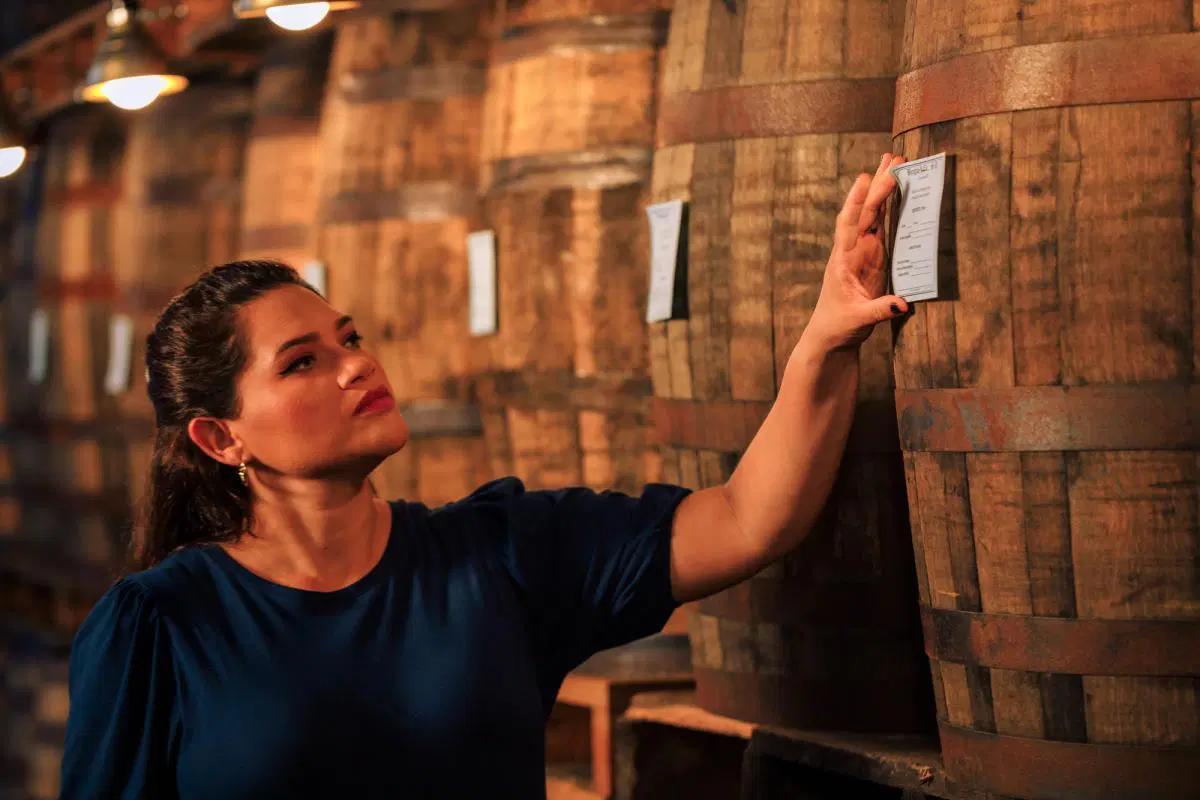Brugal, the leading Dominican Republic rum producer, has launched a new ultra premium brand named, Maestro Reserva, that is retailing at a princely £150. The company has released it in stages over the last six months in different markets, beginning with the Caribbean territory itself in November. Miami was next in February, followed by its second biggest overseas market, France, in February, now the UK. Italy will be next, later in June.
Brugal’s 1888 brand, named after the year it was founded, has been the principal one produced by the distiller since it made the decision to discontinue lower price SKUs. Retailing at around £40, it offers good value for what is a super premium product, but the Maestro Reserva lifts the bar to giddy heights aimed as it is at both on and off-trade.

The sweet and elegant aroma of Brugal rums therefore comes 85% from its maturation in exceptional barrels, in a warm tropical climate.
New toasting technique
Its maturation revolves around what Jamie Campbell, Brugal’s global brand education manager, hails as a new toasting technique that has been perfected by the company’s master distiller, or maestro ronero, Jasill Villanueva Quintana.
“Her understanding of cask maturation, and how she manipulates casks is the key,” Campbell said of Quintana, the great great grand-daughter of the founder and the youngest ever maestro ronero. She was just 24 when given the job in 2008.
“It’s truly unique what she’s developed - the world’s first dark, aromatic cask toasting process,” Campbell continued. “What that means is we end up with the ‘caramel pearl’, which is the third element of the trifecta of this process. What we have is classic molasses-based distillate, created from a double column distillation process. We distil off the second rectification column to 94.6% abv. As a result, we have a light, very elegant distillate which means we can draw the majority of our flavour, complexity and aroma from the casks we age in. We say about 85% of our flavour comes from the casks, some of the best in the world.”

“It’s truly unique what she’s developed - the world’s first dark, aromatic cask toasting process.”
The utilisation of casks and their toasting is all-important. First, the liquid is aged in used Bourbon casks before being transferred to former Sherry butts, also made from American oak. After a period in the latter, the rum is run off to a neutral vessel while the Sherry butts go through dark, aromatic toasting, during which time the temperature inside them is increased from 120°C to 360°C over 45 minutes. This is when the so-called caramel pearls are created.
“We must stop the process at exactly the right moment - precisely when caramel pearls form but no longer after that as they become bitter and astringent,” Campbell declared.
“The skill and technique of the maestro ronero is to recognise when that moment is. Then to re-integrate the rum into the American oak sherry barrel to absorb the sweetness and mouthfeel of the caramel pearls. Later, the rum is moved to a third toasted finished cask. Eventually, the rum is bottled at 41.2% abv specifically – the perfect amount to allow the liquid to sing through.”
Where Maestro Reserva is different from other rums of similar quality is the shorter maturation time in barrel. Traditionally, premium Caribbean and central American rums are aged for anything from 10 to 23 years or more in cask before bottling, but Brugal’s new brand spends under four years in oak before bottling.
“The total maturation across the three elements is three to three and a half years,” Campbell said. “One year in Speyside equates to six in the Dominican Republic. While 2% per year is the maximum they want to lose from their whisky to evaporation, it’s 8-12% from rum in the Caribbean. We could age for longer, but it doesn't mean it’s necessarily better. Putting an age on the bottle devalues the product as we focus on double maturation, which we have truly perfected.”

So how does Maestro Reserva taste?
And what a rum Brugal has created with its Maestro Reserva. Darkish honey in colour, the immediate aroma on the nose is vanilla, before honeysuckle and caramel assault the senses. On the palate, notes of orange peel and lemon zest transform into dates, raisins and creme brûlée with a hint of smoke. Seductively oily viscosity gives mouthfeel and texture, and on a second sip, tropical fruit notes of pineapple, mango and papaya are apparent. These special latter flavour profiles would appear to come from the dark, aromatic toasting process, and Brugal’s long history of cask mastery.
Perhaps the last word should go to Jassil Villanueva Quintana herself. “For me,” she says, “rum - Brugal specifically - is about fun.” She has certainly achieved that with Maestro Reserva.
































